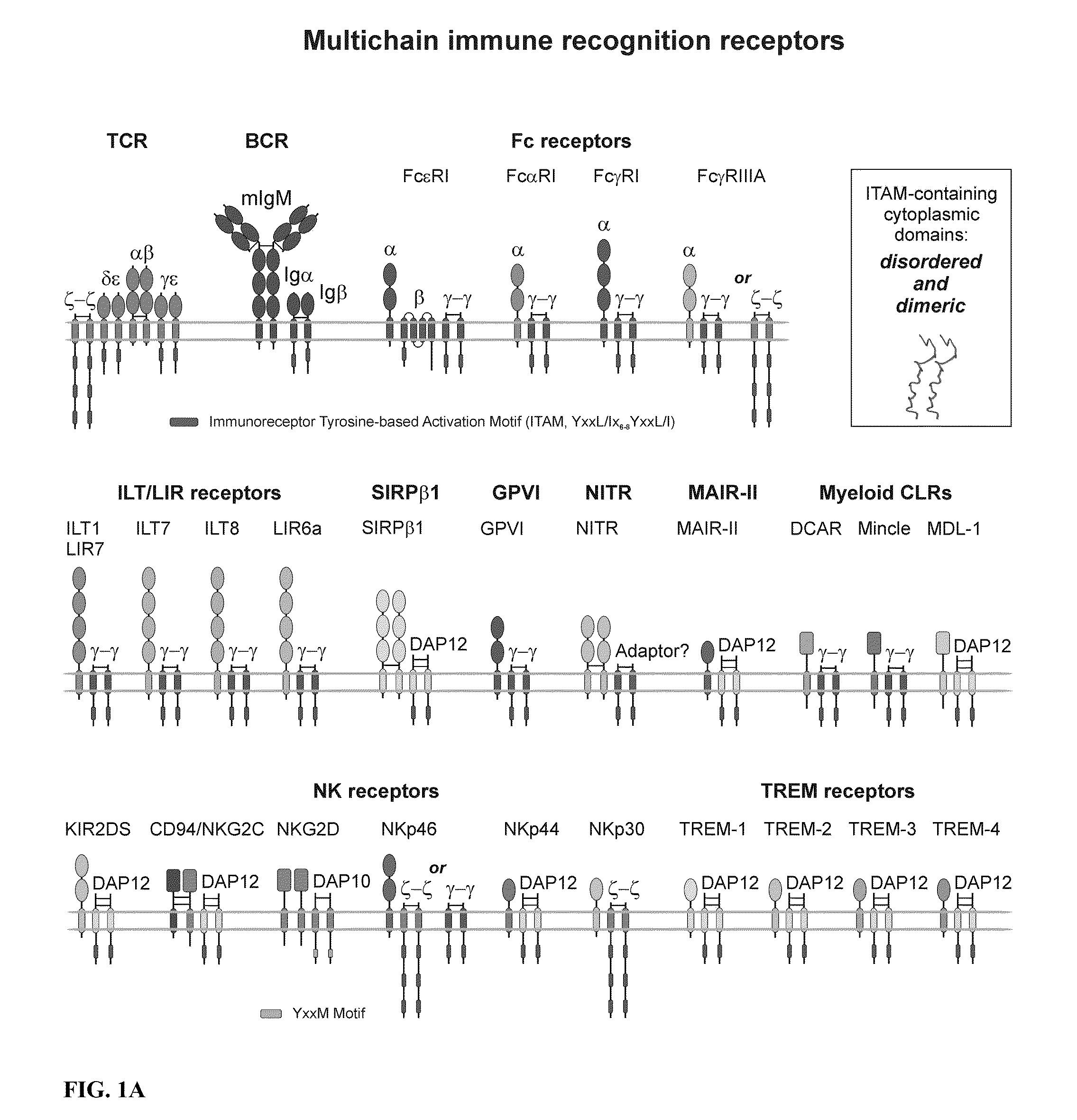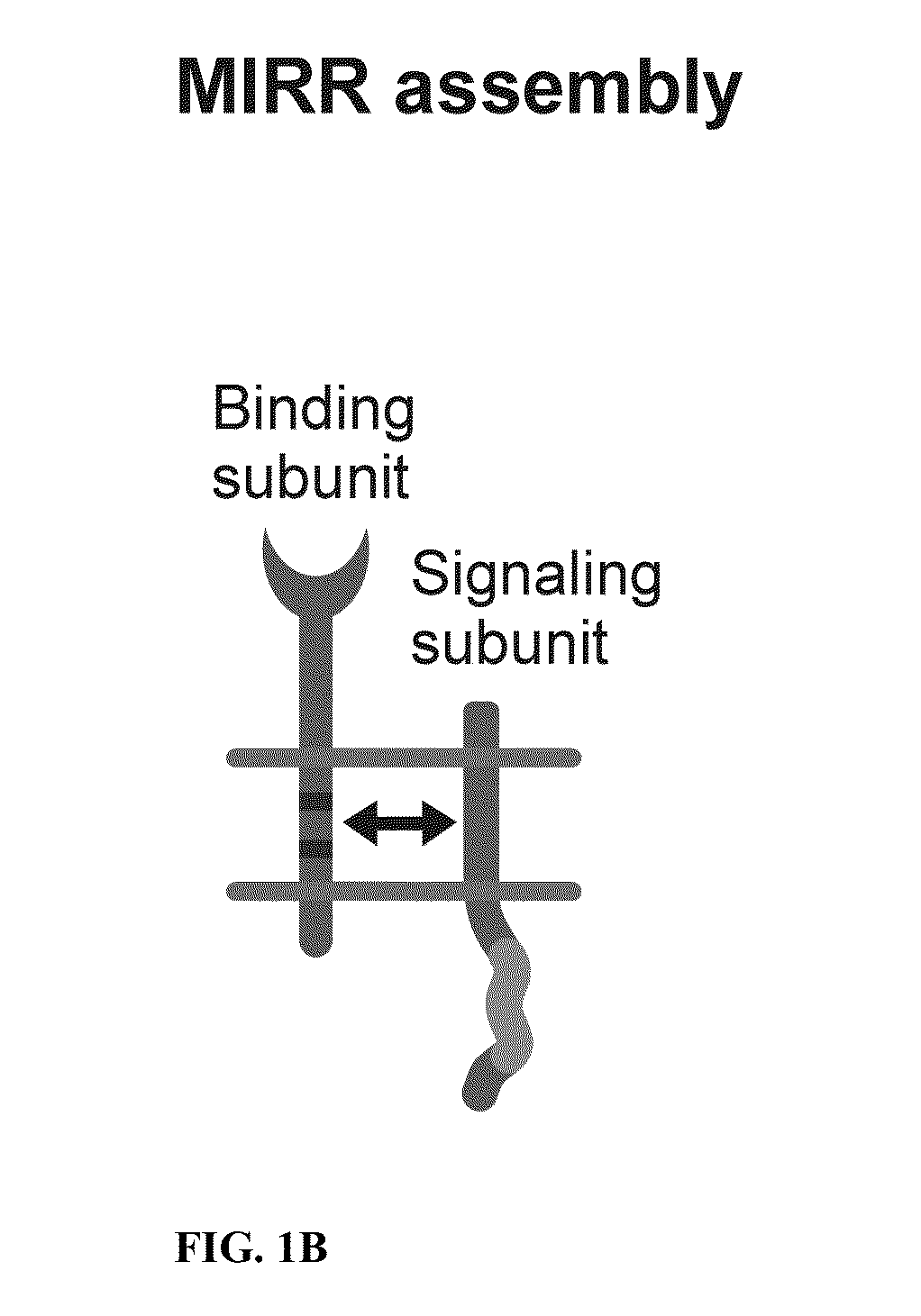Inhibition of TCR Signaling with Peptide Variants
- Summary
- Abstract
- Description
- Claims
- Application Information
AI Technical Summary
Benefits of technology
Problems solved by technology
Method used
Image
Examples
example 1
Synthesis of Peptides
[0297]This example demonstrates one embodiment of a synthesized SARS-CoV fusion protein-related peptide.
[0298]The first step is to synthesize the short hydrophobic peptide corresponding to the SARS-CoV fusion peptide sequence. Although it is not necessary to understand the mechanism of an invention, it is believed that this peptide affects T cell receptor assembly and may interact with the ζζ homodimer and CD3δε heterodimer in a competitive fashion.
[0299]The synthesis of peptides may involve the use of protecting groups. Peptides can be synthesized by linking an amino group to a carboxyl group that has been activated by reaction with a coupling agent, such as dicyclohexylcarbodiimide (DCC). The attack of a free amino group on the activated carboxyl leads to the formation of a peptide bond and the release of dicyclohexylurea. It can be necessary to protect potentially reactive groups other than the amino and carboxyl groups intended to react. For example, the α-a...
example 2
[0303]This example demonstrates that the hydrophobic properties of SARS CoV FP peptides and other peptides and compositions of the present invention may be overcome without risking cell toxicity.
[0304]The SARS CoV FP and SARS CoV FP-AA peptides can be noted to be hydrophobic and insoluble in aqueous solutions. A variety of solvents and carriers can be tested to improve their solubility. Solvents and / or carriers that improve solubility of CP and CP-A include, but not limited to, ethanol, dimethylsulphoxide (DMSO), dimethyl formamide (DMF), and trifluoracetic acid (TFA). When using DMSO as a solvent, the final concentration used in the platelet function experiments can range from 0.063%-0.250%. DMSO concentrations greater than 1% is believed to be toxic to cells. Stock solutions of SARS CoV FP and SARS CoV FP-AA can be prepared in DMSO and used at a 1:2000, 1:1000, or 1:400 dilution.
example 3
Effect of T Cell Receptor Inhibitory Peptides of Viral Origin on Antigen-Stimulated Proliferation on Rat Primed Lymph Node Cells (PLNC) and T Cell Lines
A. Cells
[0305]The following cell lines can be used as described in (US Pat. Appl. 20050070478) and incorporated herein by reference: 2B4.11, a murine T cell hybridoma that expresses a complete antigen receptor on the cell surface and produces IL-2 following antigen recognition (cytochrome-c); an interleukin-2 (IL-2) dependent T cell line (CTLL) for conventional biological IL-2 assays; and the B-cell hybridoma cell line LK 35.2 (LK, I-Ek bearing) which acts as the antigen presenting cell. The hybridomas is grown in T cell medium (RPMI-1640 media containing 10% fetal calf serum (FCS), gentamycin (80 μg / ml), glutamine (2 mM) and mercaptoethanol (0.002%)). The African green monkey kidney fibroblast cell line (COS) is grown in Dulbecco's modified Eagle's medium (DMEM) supplemented with 10% FCS.
[0306](Samelson ...
PUM
| Property | Measurement | Unit |
|---|---|---|
| Immunogenicity | aaaaa | aaaaa |
Abstract
Description
Claims
Application Information
 Login to View More
Login to View More - R&D
- Intellectual Property
- Life Sciences
- Materials
- Tech Scout
- Unparalleled Data Quality
- Higher Quality Content
- 60% Fewer Hallucinations
Browse by: Latest US Patents, China's latest patents, Technical Efficacy Thesaurus, Application Domain, Technology Topic, Popular Technical Reports.
© 2025 PatSnap. All rights reserved.Legal|Privacy policy|Modern Slavery Act Transparency Statement|Sitemap|About US| Contact US: help@patsnap.com



